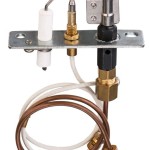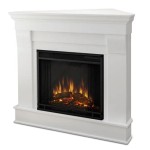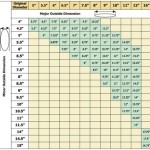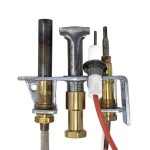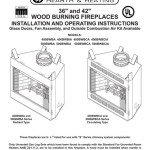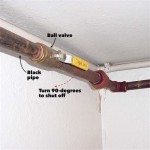Use a conversational tone.
Gas Fireplace Exterior Vent Covers: A Comprehensive Guide
Gas fireplaces offer a convenient and aesthetically pleasing heating solution for many homes. Unlike traditional wood-burning fireplaces, they eliminate the need for firewood storage and reduce particulate emissions. A crucial component of the gas fireplace system is the exterior vent, also referred to as a termination cap. This vent allows combustion byproducts to safely exit the home. Protection of this vent from external elements is vital, leading to the use of exterior vent covers. This article provides a detailed examination of gas fireplace exterior vent covers, covering their purpose, types, selection criteria, installation, maintenance, and troubleshooting.
The Purpose and Importance of Exterior Vent Covers
Exterior vent covers play a multifaceted role in the safe and efficient operation of a gas fireplace. Their primary function is to prevent the entry of unwanted elements into the venting system. These elements can include rain, snow, sleet, leaves, debris, and even small animals. Without a proper vent cover, these intrusions can lead to a variety of problems.
Moisture intrusion, for instance, can corrode the vent pipes over time, reducing their lifespan and potentially leading to dangerous leaks. Debris accumulation can obstruct the vent, restricting airflow and hindering the proper venting of combustion gases. This can result in carbon monoxide buildup inside the home, a serious health hazard. Small animals, such as birds or rodents, can build nests inside the vent, further exacerbating airflow problems and creating a fire hazard. Furthermore, vent covers can provide a barrier against strong winds that might otherwise affect the draft and flame characteristics of the fireplace.
Beyond safety concerns, vent covers also contribute to the overall efficiency of the fireplace. By preventing the infiltration of cold air into the venting system, they help maintain a more consistent temperature, reducing heat loss and improving fuel efficiency. They also enhance the lifespan of the fireplace components by protecting them from the harsh elements. In many regions, local building codes and regulations mandate the use of specific types of vent covers to ensure compliance with safety standards.
Types of Gas Fireplace Exterior Vent Covers
The market offers a wide variety of gas fireplace exterior vent covers, each designed to meet specific venting requirements and aesthetic preferences. Understanding the different types is crucial for selecting the most appropriate cover for a given installation.
Horizontal Vent Covers: Horizontal vent covers are commonly used for direct vent fireplaces, where the vent pipe terminates horizontally through an exterior wall. These covers typically feature a screened or louvered design to prevent debris entry while allowing for unobstructed airflow. They often include a backdraft damper to prevent cold air from entering the home when the fireplace is not in use. The design can vary, with some models incorporating a rain cap or shield to further protect against moisture.
Vertical Vent Covers: Vertical vent covers are used for fireplaces that vent vertically through the roof. These covers often feature a conical or cylindrical shape with a mesh screen to keep out debris and animals. They are designed to withstand harsh weather conditions, including heavy snow and strong winds. Some vertical vent covers also include a spark arrestor to prevent embers from escaping and potentially igniting nearby materials.
High-Wind Vent Covers: In regions prone to high winds, specialized vent covers are often required. These covers are designed to minimize the impact of wind on the venting system, preventing backdrafting and maintaining a stable flame. They typically feature a more aerodynamic design and may incorporate baffles or deflectors to redirect the wind. These covers are crucial for ensuring safe and reliable operation of the fireplace in windy conditions.
Decorative Vent Covers: In addition to functional vent covers, decorative options are available to enhance the aesthetic appeal of the exterior vent. These covers may be made from materials such as copper, brass, or stainless steel, and often feature intricate designs or patterns. While decorative vent covers can add a touch of elegance to the exterior of the home, it is important to ensure that they meet all safety and performance requirements.
Choosing the right type of vent cover depends on several factors, including the type of fireplace, the venting configuration, the local climate conditions, and personal preferences. Consulting with a qualified fireplace installer or technician is recommended to ensure proper selection and installation.
Selecting the Right Vent Cover: Key Considerations
Choosing the appropriate gas fireplace exterior vent cover is essential for ensuring safe and efficient operation. Several factors should be considered during the selection process. Proper sizing, material selection, code compliance, and aesthetic considerations all play a role in determining the best vent cover for a particular application.
Sizing and Compatibility: The vent cover must be properly sized to match the diameter of the vent pipe. Using an undersized vent cover can restrict airflow, leading to incomplete combustion and carbon monoxide buildup. Conversely, an oversized vent cover may not provide adequate protection against debris and animals. Consult the fireplace manufacturer's specifications or a qualified technician to determine the correct vent size. It is also essential to ensure that the vent cover is compatible with the type of venting system used, whether it is direct vent, natural vent, or B-vent.
Material Selection: Vent covers are typically made from galvanized steel, aluminum, stainless steel, or copper. Galvanized steel is a cost-effective option, but it may be susceptible to corrosion over time, especially in coastal environments. Aluminum is lightweight and corrosion-resistant, making it a good choice for many applications. Stainless steel offers excellent durability and corrosion resistance, making it ideal for harsh climates. Copper vent covers are aesthetically pleasing and highly durable, but they are also more expensive. The choice of material should be based on the local climate conditions, budget constraints, and aesthetic preferences.
Code Compliance: Local building codes and regulations often specify the type of vent cover required for gas fireplaces. These codes are designed to ensure safety and prevent fire hazards. Check with the local building department or a qualified fireplace installer to determine the applicable code requirements. Ensure that the selected vent cover meets all relevant safety standards and is properly certified.
Aesthetic Considerations: While functionality is paramount, the aesthetic appearance of the vent cover should also be considered. Choose a vent cover that complements the exterior of the home and adds to its overall curb appeal. Decorative vent covers are available in a variety of styles and finishes, allowing homeowners to personalize their venting system. However, it is important to prioritize safety and performance over aesthetics, ensuring that the chosen vent cover meets all functional requirements.
Installation and Maintenance of Exterior Vent Covers
Proper installation and regular maintenance are essential for ensuring the long-term performance and safety of gas fireplace exterior vent covers. Improper installation can compromise the effectiveness of the vent cover, while neglected maintenance can lead to damage and eventual failure.
Installation Procedures: Installation procedures vary depending on the type of vent cover and the venting configuration. In general, the vent cover should be securely attached to the vent pipe using appropriate fasteners. Ensure that the vent cover is properly aligned and that there are no gaps or openings that could allow debris or animals to enter. Follow the manufacturer's instructions carefully, and if unsure, consult a qualified fireplace installer. For vertical vents, ensure proper flashing to prevent water leaks around the vent pipe penetration through the roof. Use high-temperature sealant where necessary to create a watertight seal.
Regular Inspections: Inspect the vent cover regularly for signs of damage, corrosion, or obstruction. Check for cracks, rust, or loose fasteners. Remove any debris, such as leaves, twigs, or bird nests, that may have accumulated on or inside the vent cover. Pay particular attention to the screen or mesh, ensuring that it is intact and free of holes. Inspect the surrounding area for any signs of damage or deterioration.
Cleaning and Maintenance: Clean the vent cover periodically using a mild detergent and water. Use a soft brush or cloth to remove any dirt or grime. Rinse thoroughly and allow to dry completely before reinstalling. For stainless steel or copper vent covers, use a specialized cleaner to maintain their luster and protect against corrosion. Lubricate any moving parts, such as dampers or hinges, with a silicone-based lubricant. Replace any damaged or worn parts as needed.
Professional Servicing: Schedule regular professional servicing of the gas fireplace and venting system. A qualified technician can inspect the vent cover, vent pipes, and other components for potential problems. They can also perform necessary repairs or replacements to ensure the safe and efficient operation of the fireplace. Professional servicing is especially important for older fireplaces or those that are used frequently.
Troubleshooting Common Vent Cover Problems
Even with proper installation and maintenance, gas fireplace exterior vent covers can sometimes experience problems. Identifying and addressing these issues promptly is crucial for maintaining the safety and performance of the fireplace.
Drafting Issues: One common problem is drafting, where the fireplace struggles to maintain a consistent flame or experiences backdrafting, where combustion gases enter the home instead of exiting through the vent. This can be caused by a variety of factors, including a blocked vent cover, incorrect vent sizing, or negative pressure inside the home. Check the vent cover for obstructions and ensure that it is properly sized. Consider installing a high-wind vent cover if wind is a contributing factor. Address any negative pressure issues by improving ventilation inside the home.
Corrosion: Corrosion is another common problem, especially in coastal environments or areas with high humidity. Salt air and moisture can accelerate the corrosion process, leading to rust and eventual failure of the vent cover. Choose corrosion-resistant materials, such as stainless steel or copper, when selecting a vent cover. Apply a protective coating to galvanized steel vent covers to prevent rust. Regularly inspect the vent cover for signs of corrosion and address any issues promptly.
Animal Intrusion: Animals, such as birds and rodents, can sometimes build nests inside the vent cover, obstructing airflow and creating a fire hazard. Choose a vent cover with a fine mesh screen to prevent animal intrusion. Regularly inspect the vent cover for signs of nesting activity and remove any nests promptly. Consider installing a bird or rodent deterrent to further protect the venting system.
Icing: In cold climates, ice can accumulate on the vent cover, restricting airflow and potentially causing drafting problems. Choose a vent cover that is designed to shed ice and snow. Regularly clear any ice or snow that accumulates on the vent cover. Consider installing a vent cover with a built-in heater to prevent ice buildup.
By understanding the purpose, types, selection criteria, installation, maintenance, and troubleshooting of gas fireplace exterior vent covers, homeowners can ensure the safe and efficient operation of their fireplaces for years to come. Addressing any problems promptly and seeking professional assistance when needed will help maintain the performance and longevity of the venting system.

Gas Fireplace Exterior Vent Can I Paint The Protective Cage

Termination Cap Cover For Direct Vent Fireplace Draft Stopper

Fireplace Cover To Keep Cold Air Out

Gas Fireplace Exhaust Exterior Inspections Internachi Forum

Benefits Of Direct Vent Fireplaces

Gas Fireplace Exhaust Exterior Inspections Internachi Forum

Termination Cap Cover For Direct Vent Fireplace Draft Stopper

Bug Proofing A Direct Vent Fireplace Doityourself Com Community Forums

Gas Fireplace Vent Question Exterior Inspections Internachi Forum
Gas Fireplace Venting Explained Heatilator

